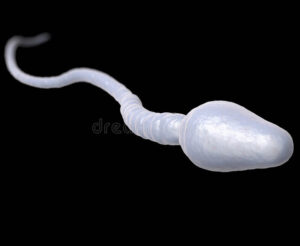How is Sperm Tube Blockage diagnosed?
Male Infertility is one of the most common diseases these days, and that’s because of Sperm tube blockage? So, how is sperm tube blockage diagnosed?
You asked well we have designed this article for you. Now, if that sounds interesting to you then what are we waiting for? let us begin.
Sperm Tube Blockage
The ejaculatory reflex occurs when two ducts transport semen from the seminal vesicles to the urethra. Sperm may not enter the ejaculate if one or both ejaculatory ducts are obstructed or blocked.
In some instances, the vents are blocked from birth (this is known as congenital blockage), and in others, the obstruction is acquired.
Dr. Omar has reported a wide range of EDO. The presence of duct obstruction and low ejaculate volumes in the absence of sperm or azoospermia as a presenting symptom distinguishes complete or classic EDO. In an incomplete or partial EDO, a partial blockage of one duct or a block of both ducts is a partial obstruction of one duct or a union of both ducts.

However, despite the presence of ejaculated sperm, the volume, count, and motility are all generally low. Anatomic evidence of a physical blockage in the ejaculatory duct is absent in functional EDO, which manifests as regular ejaculatory duct obstruction.
How is Sperm Tube Blockage diagnosed?
EDO is diagnosed using a complete sexual and medical history, a physical examination of the testicles and genitalia, and laboratory testing that analyses the semen analysis and reproductive hormones, such as follicle-stimulating hormone (FSH) and testosterone levels, among other things.
When it comes to diagnosing probable EDO cases, transrectal ultrasonography (TRUS) is the crucial diagnostic technique to utilize.
During this procedure, dilated seminal vesicles, cysts obstructing the ejaculatory ducts, and calcifications in the ducts may be discovered and treated. However, as Dr. Omar’s study has demonstrated, TRUS alone is insufficient in many situations to establish a diagnosis.
He found that TRUS, like taking a photo with a camera, is very effective in detecting the presence of a blockage. To provide an accurate diagnosis, it should be supplemented with other diagnostic methods that provide a more “dynamic” picture of the system.
These extra procedures include seminal vesicle sperm aspiration, TRUS-guided seminal ventriculography, ejaculatory duct chromotubation, and ejaculatory duct manometry, to name a few. ( Sperm will be unable to leave the body )
Seminal vesicle sperm aspiration is a test that includes removing fluid from the seminal vesicle to examine whether sperm is being produced.
This reveals that the obstacles are caused by a high concentration of sperm in the seminal vesicle fluid. This approach, however, does not assist in determining the magnitude of the blockage or distinguishing between a physical backlog and an impediment causing a functional constraint.

Using chromotubation and ejaculatory duct pressure measurements, Dr. Omar may be able to discriminate between EDO instances caused by a blockage that can be surgically corrected and dysfunctional cases that will not respond to surgery (manometry). As a result, he is able to prevent unneeded surgery wherever feasible.
